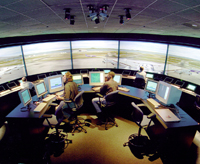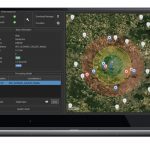
Septentrio and FreeFlight Systems will develop new GPS/SBAS (Satellite Based Augmentation System) receivers for air traffic control as part of a new strategic partnership announced on April 13.
Septentrio and FreeFlight Systems will develop new GPS/SBAS (Satellite Based Augmentation System) receivers for air traffic control as part of a new strategic partnership announced on April 13.
The new receivers will be developed for automatic dependent surveillance-broadcast (ADS-B), Required Navigation Performance (RNP) and localizer performance with vertical guidance (LPV) applications.
On April 8 Septentrio announced AiRx2, a 20-channel, compact TSO-certifiable GPS+SBAS Beta-3 OEM receiver, designed for integration in precision aviation applications, and built around the company’s special multi-system aviation ASIC AReCo.
The AiRx2 module features 16 channels for processing GPS L1 C/A code/carrier data and four channels L1 SBAS channels, capable of handling an output rate of uup to 20 Hertz. The module is also hardware-ready for GPS L5 and Galileo, according to the company.
The AiRx2 contains multiple reliability features, including an embedded independent health processor, receiver autonomous integrity monitoring (RAIM) and predictive RAIM. AiRx2 also provides code and carrier data for GBAS reference station applications.
In a joint press release, Septentrio and FreeFlight said they intend to address the need for high performance satellite-based positioning, navigation, and timing (PNT) as the “global air traffic management system continues to move away from radar-based operations to autonomous aircraft based operations.”
Headquartered in Leuven, Belgium, Septentrio Satellite Navigation NV designs and manufactures high-end OEM multi-frequency and multi-constellation GNSS receivers.
FreeFlight supplies avionics systems for commercial and military aircraft. The Waco, Texas based company emerged from Trimble Navigation’s Avionics Products Division in 2001. It was the first company to certify an airborne Wide Area Augmentation System (WAAS) receiver.





